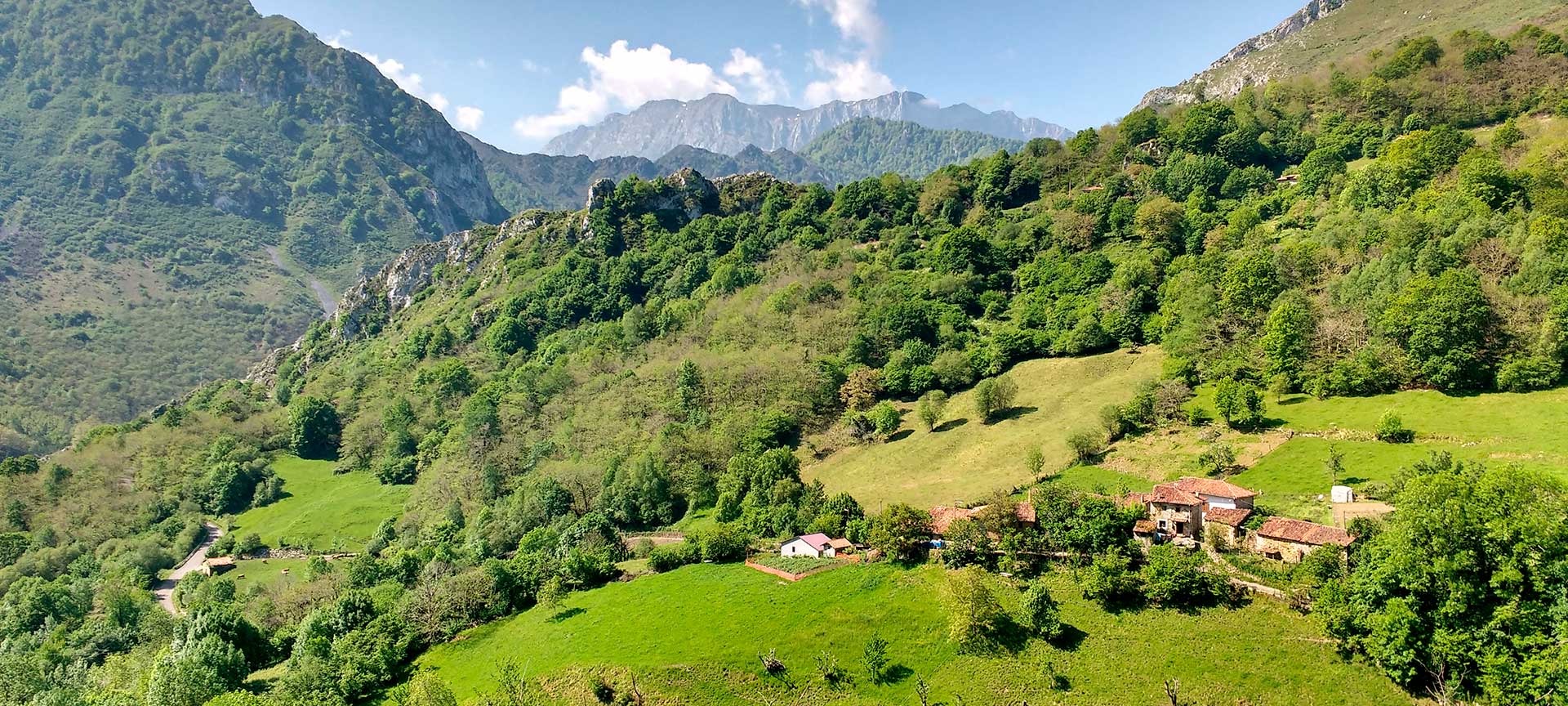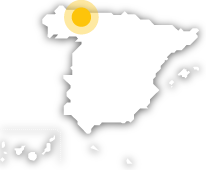
Ponga Biosphere Reserve

In the area of Asturias, in the heart of the Cantabrian Mountains and beside the Picos de Europa National Park, lies the Ponga Natural Park, where the impressive forests cover almost 40% of its surface area.Its main attraction, apart from the incredible landscapes of beech forests, is to see how its inhabitants have preserved the traditional constructions, which largely consist of stone, wood and tile. The area’s cuisine, artisan crafts and folklore have also been maintained, having been passed down from generation to generation. It was declared a Biosphere Reserve in 2018.
This natural enclave is home to the Peloño forest, one of the most emblematic in all of Asturias and in an excellent state of conservation. In addition, you can also enjoy other natural attractions here: rugged gorges, like the one at Los Beyos or spectacular mountains such as the Tiatordos peak and Peña Ten.You can also admire the area’s traditional houses. In fact, it is well worth stopping in some of the pretty surrounding villages to admire the unique hórreos (raised granaries) in Beyusco, which are very representative of its cultural heritage.And naturally you can take advantage of the trip to enjoy all number of outdoor pursuits like hiking, or sample the local products, such as the famous Los Beyos cheese made by farmers from the surrounding gorge slopes.
Ponga Biosphere Reserve
San Xuan/San Juan de Beleño. Ponga
33557 Ponga, Asturias (Principality of Asturias)
Activa JS
What you need to know
-
Cultural information
There are some extraordinary examples of traditional houses conserved in the small villages surrounding Ponga, where the kitchen occupied the entire ground floor and the fire was lit without any fireplace. You can also see some other buildings of historical interest. For example, the Cazo Tower (12th century), one of the oldest medieval buildings in Asturias. The religious buildings that have remained intact include the parish churches and mountain chapels, such as the ones at Ventaniella and Arcenorio. And from the modern age, there are some interesting examples of Indiana architecture.With regards its folklore, you can enjoy the unique festival of los aguinalderos, whichtakes place between New Year’s Eve and the Epiphany (6 January) and stars a masked character known as Guirria who moves through the streets.Another event worthy of mention is the traditional old market of “El Trasiegu”, which is held every Easter in Sobrefoz.
-
Environmental information
The most important forests in the region are the beech forests, although there are also holm oaks, Pyrenean oaks, mixed forests and chestnut forests. You can also find Asturian daffodils and violets, which are very typical of this region.In terms of wildlife, there are 12 protected species in Ponga, such as the brown bear, the wood grouse, the wolf, the otter, the muskrat and the broom hare, as well as birds of prey like the golden eagle, the peregrine falcon and the Egyptian vulture.
-
Information for visits
The natural park has a visitor centre (San Juan de Beleño s/n). There is a permanent exhibition that offers the ideal opportunity to learn about the values and resources of the reserve. Visitors can also choose from seven short official hiking routes to reach some of the area’s prettiest viewing points. There are also two equipped recreation areas (one at Sellaño and the other at Las Mestas), different accommodation (such as the spa at Mestas, founded in the 18th century and today refurbished as a hotel and spa) and a wide choice of restaurants. Although any time of the year is a good time to visit, in the autumn the colourful spectacle of the beech forests is simply stunning.


